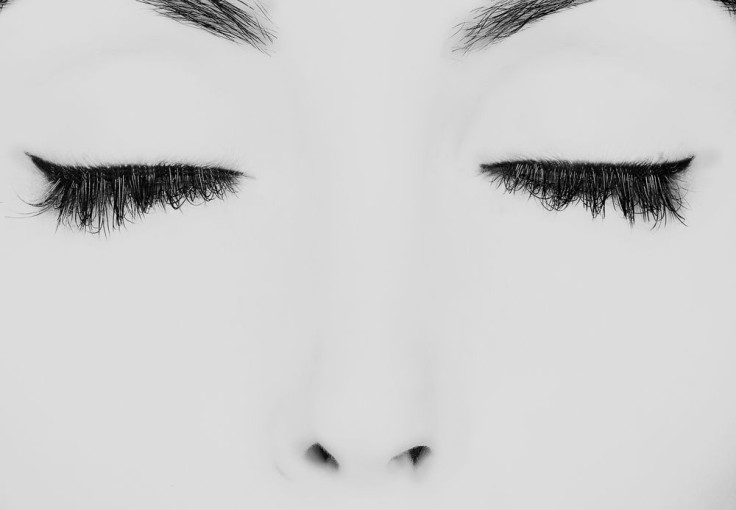While Dreaming During REM Sleep, Brain Captures Visual Images With Darting Eyes

Our eyes move quickly and randomly when we’re in REM (rapid eye movement) sleep. This sleep stage is where we tend to experience our most vivid dreams, but can our darting eyes actually capture snapshots of these dreams? According to a recent study published in the journal Nature Communications, bursts of brain activity after each stage of REM sleep mimic how we see a new image while awake, meaning that when we move our eyes during sleep, we're seeing a new image in our dream world.
Previously, scientists have hypothesized the rapid eye movements experienced during sleep reflect a person viewing their dream sequence in the same way they would view the world when awake. A team of researchers from France and Israel decided to investigate, although it has proven to be difficult to provide evidence for. “People who were woken up when their eyes were moving from left to right would say they were dreaming about tennis, for example,” said co-author Yuval Nir of the Sackler School of Medicine at Tel Aviv University, New Scientist reported.
For example, it was believed the rapid eye movements were in sync with the actions of dreamers who act out their dreams. A 2010 study published in the journal Brain found people who have an REM sleep behavior disorder — those who often physically act out their dreams — match their eye movements with their actions about 80 percent of the time. For example, researchers observed a man who would dream about smoking would physically appear to hold a cigarette and put it out in an ashtray. His eye and head movements downward seemed to indicate he was focusing on the cigarette being put out.
However, in REM sleep, the muscles of the body are usually paralyzed with relatively little body movements. The brain’s neuron activity becomes quite intense in a similar way it does during wakefulness. This leads to electrical brain activity.
Nir and his colleagues sought to record the activity of the brain from within the brain, as opposed to measuring non-invasively from the scalp to see whether brain behavior during sleep was more linked to physical movement, or the processing of visual images. Over a period of four years, the researchers worked with 19 epileptic patients at the UCLA Medical Center, recording from electrodes in various brain regions, but specifically the medial temporal lobe. This is the region that allows us to have a reaction to images.
Brain activity of these patients was compared across three settings, including REM sleep brain activity, wakeful eye movements in darkness, and wakeful fixed-gaze visual processing. The team recorded brain activity from approximately 40 neurons in each volunteer’s brain as they slept. They were able to listen to the patients’ brain signals via EEG (electroencephalogram) electrodes placed on the scalp, and tracked their eye and muscle movements. When the patients were awake, they were shown a picture, specifically one associated with a memory.
The findings revealed during rapid eye movements in sleep, brain cells in the medial temporal lobe reflected similar activity regardless of whether patients were asleep or awake, even when they were fixated on the images presented to them in the study. Neurons, specifically those in the hippocampus, showed surge of activity after eye movements in sleep. This activity is commonly seen when brain cells are processing new visual images.
"This electrical pattern closely resembles what happens when we view something new in waking life. We suspect rapid eye movements reflect the instant when the brain encounters a new image in a dream," said Dr. Itzhak Fried, senior author of the study and a professor of neurosurgery at the David Geffen School of Medicine at UCL, in a news release.
This suggests rapid eye movements while asleep represent the moment when we encounter a new image in a dream in a similar way to when we see a new photo when we’re awake. However, since the researchers did not wake their patients, they can’t be sure what they were dreaming. The researchers, however, are sure that the brain is switching between different mental images.
Sources: Andrillon T, Nir Y, Cirelli C et al. Single-neuron activity and eye movements during human REM sleep and awake vision. Nature Communications. 2015.
Leclair-Visonneau L, Oudiette D, Gaymard B et al. Do the eyes scan dream images during rapid eye movement sleep? Evidence from the rapid eye movement sleep behavior disorder model. Brain. 2010.



























